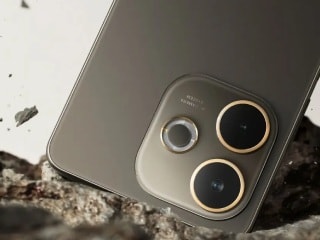- Home
- Science
- Science News
- Researchers Close to Finding Ideal Building Block for Quantum Computers
Researchers Close to Finding Ideal Building Block for Quantum Computers
The latest qubit's ultra-pure neon surface allows the electron to remain stable enough for manipulation.

Photo Credit: Argonne National Laboratory/ Dafei Jin
Experiment was done inside a dilution refrigerator at a controlled temperature
It has been more than four years since IBM announced their first quantum computer using 50 qubits or quantum bits. Yet, we haven't come closer to getting a quantum computer that can be practically used. In fact, the quantum computers that we have are not suitable for large-scale usage and cannot match up to the tasks that other forms of technology can achieve effortlessly. Scientists believe that the fault lies in the building block of these quantum computers. Hence, they are working to make the ideal building blocks to make these computers more usable.
A regular computer uses bits as its building blocks. These bits store data in the form of either 1 or 0 at any given time. A quantum computer uses building blocks known as qubits for functioning. These qubits function much like the cat in Schrodinger's cat thought experiment. Just as the cat is dead and alive at the same point in time, a qubit can simultaneously exist in a 0 and 1 state. This is what gives a quantum computer an edge over regular computers.
Qubits can be built in various ways to fulfil the requirements, according to the researchers of the study. However, scientists believe there is an ideal way to make it. The current technique uses a single electron. This is trapped on frozen neon gas and controlled using a superconducting quantum circuit. It may be the qubit that's closest to its ideal form but we have to wait before the ideal qubit becomes a reality.
The latest qubit's ultra-pure neon surface allows the electron to remain stable enough for manipulation. It also facilitates a quick change of the qubit from one state to another. It qualifies as a successful qubit as it is also capable of entanglement (ability to link with other qubits).
A superconductor-based microwave resonator misplaced under the qubit can read the state and measure the performance of the qubit.
Xianjing Zhou from the Argonne National Laboratory said, “With this platform, we achieved, for the first time ever, strong coupling between a single electron in a near-vacuum environment and a single microwave photon in the resonator.” This will allow scientists to use microwave photons to manipulate each qubit.
However, the experiment was done inside a dilution refrigerator at a very controlled temperature. Hence, the qubits aren't yet ready for usage in laptops.
Multinational companies like Google and IBM are trying to push their own qubit models. But the researchers behind this new qubit believe that theirs is the most promising model to date as it is easy to be manufactured at a low cost.
The recent study was published in the journal Nature.
For the latest tech news and reviews, follow Gadgets 360 on X, Facebook, WhatsApp, Threads and Google News. For the latest videos on gadgets and tech, subscribe to our YouTube channel. If you want to know everything about top influencers, follow our in-house Who'sThat360 on Instagram and YouTube.
Related Stories
- Samsung Galaxy Unpacked 2025
- ChatGPT
- Redmi Note 14 Pro+
- iPhone 16
- Apple Vision Pro
- Oneplus 12
- OnePlus Nord CE 3 Lite 5G
- iPhone 13
- Xiaomi 14 Pro
- Oppo Find N3
- Tecno Spark Go (2023)
- Realme V30
- Best Phones Under 25000
- Samsung Galaxy S24 Series
- Cryptocurrency
- iQoo 12
- Samsung Galaxy S24 Ultra
- Giottus
- Samsung Galaxy Z Flip 5
- Apple 'Scary Fast'
- Housefull 5
- GoPro Hero 12 Black Review
- Invincible Season 2
- JioGlass
- HD Ready TV
- Laptop Under 50000
- Smartwatch Under 10000
- Latest Mobile Phones
- Compare Phones
- Itel A95 5G
- Samsung Galaxy M56 5G
- HMD 150 Music
- HMD 130 Music
- Honor Power
- Honor GT
- Acer Super ZX Pro
- Acer Super ZX
- Asus ExpertBook P3 (P3405)
- Asus ExpertBook P1 (P1403)
- Moto Pad 60 Pro
- Samsung Galaxy Tab Active 5 Pro
- Oppo Watch X2 Mini
- Garmin Instinct 3 Solar
- Xiaomi X Pro QLED 2025 (43-Inch)
- Xiaomi X Pro QLED 2025 (55-Inch)
- Nintendo Switch 2
- Sony PlayStation 5 Pro
- Whirlpool 1.5 Ton 3 Star Inverter Split AC (SAI18K38DC0)
- Whirlpool 1.5 Ton 5 Star Inverter Split AC (SAI17B54SED0)

















